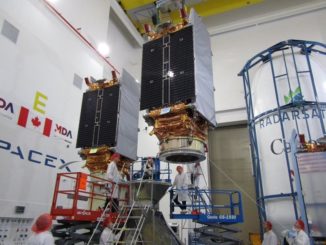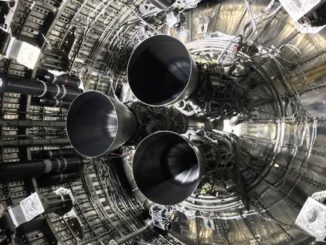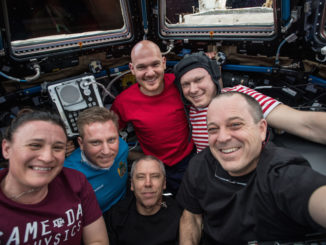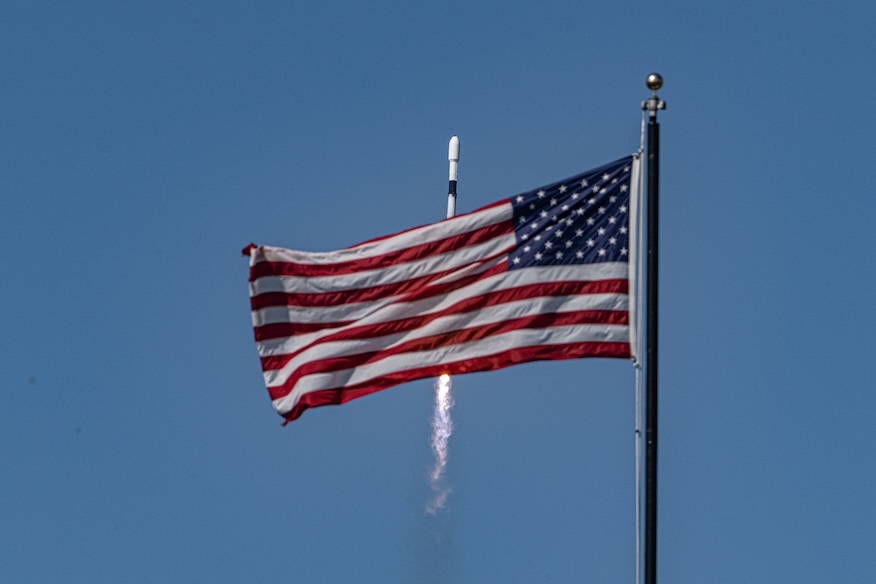
A European satellite designed to augment both weather monitoring and assessments of air quality and pollution for Europe and North Africa took flight from Florida on Tuesday evening.
A SpaceX Falcon 9 rocket lofted the Meteosat Third Generation Sounder (MTG-S1) satellite into a geosynchronous transfer orbit, setting the spacecraft up to operate in a geostationary Earth orbit, roughly 36,000 km (~22,369 mi) above the equator.
The mission lifted off from Launch Complex 39A at NASA’s Kennedy Space Center at 5:04 p.m. EDT (2104 UTC) on Tuesday, July 1.
SpaceX launched the mission using the Falcon 9 first stage booster with the tail number B1085, which flew for a ninth time. Its previous missions include NASA’s Crew-9, Fram2 and Firefly Aerospace’s Blue Ghost Mission 1.
Nearly 8.5 minutes after liftoff, B1085 landed on the droneship, ‘Just Read the Instructions.’ This was the 127th landing for this vessel and the 471st booster landing to date.
The MTG-S1 satellite will deploy from the Falcon 9 rocket’s second stage around 35 minutes following liftoff with signal acquisition expected in the minutes to follow. The satellite will then begin a roughly 17-day transfer period to through its orbital transfer period out to its operating orbital position.
“It’s very exciting. We can’t wait to get it up there and start operating it,” said James Champion, the European Space Agency’s (ESA) MTG project manager. “We’ve got a team out in Fucino (Space Centre), it’s a company called Telespazio, from where the LEOP is going to be run. That’s the launch and early operations phase. So, they’ll take command of the satellite as soon as the rocket has separated the satellite.”
After reaching its destination, there will be a roughly 9-12 month commissioning period where the instruments will be turned and calibrated before its sending down usable data. Champion said that’s largely due to data processing on the ground, managed principally by UniSat.
“We’ve done as much of the calibration and the performances testing on the ground. We know what it can do here, but when we’re up there, there’ll still be a lot of fine tuning to do, to prove how good this is,” he said.
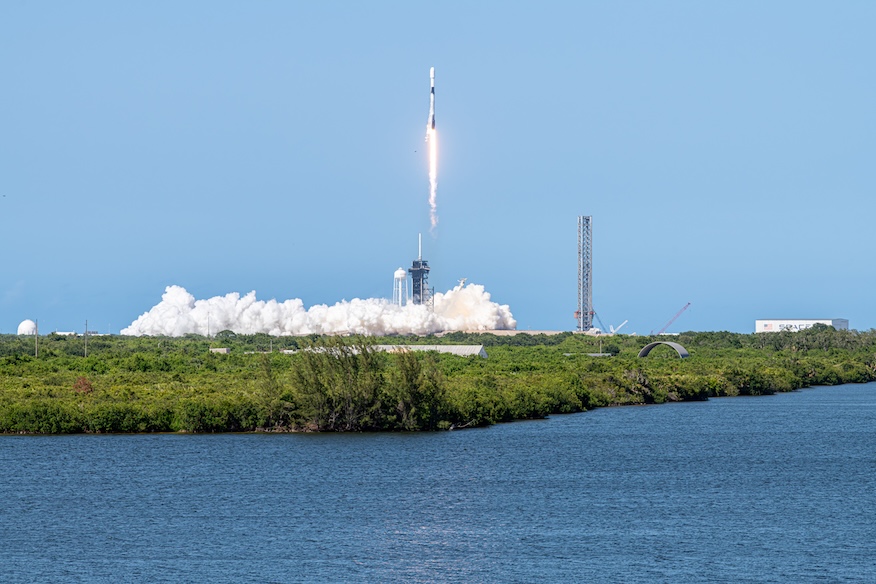
Next generation capabilities
The primary payload onboard this Falcon 9 rocket was the Meteosat Third Generation Sounder (MTG-S1) satellite. The spacecraft was loaded up on a transport barge and set sail on April 23, 2025, to begin a roughly two-week journey to Cape Canaveral, Florida.
The spacecraft represents Europe’s first hyperspectral sounding instrument placed in GEO. This will allow it to survey target areas as quickly as once every 15 minutes to provide continuous weather data to meteorologists on the ground.
The satellite is the second in a six-satellite series developed by the European Oganisation for the Exploration of Meteorological Satellites (EUMETSAT) alongside ESA. They’re designed to operate as two sets of three satellites, one sounder and two imagers.
The first imager as part of this new generation of satellites, MTG-I1 launched onboard an Ariane 5 rocket from Europe’s Spaceport in French Guiana on Dec. 13, 2022. The second imager, MTG-I2, is set to launch in 2026.
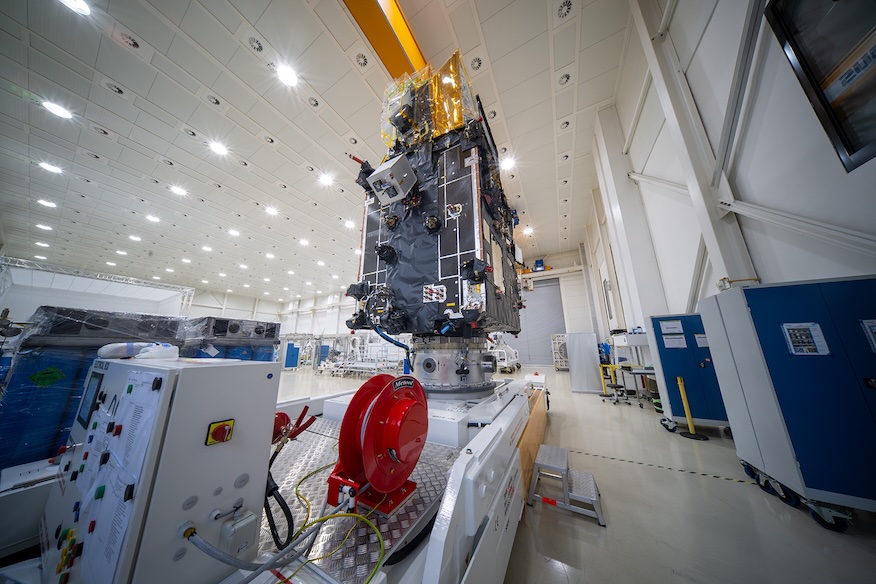
Each satellite has a nominal operating life of 8.5 years, but ESA said they are each equipped with enough fuel for a mission of more than 10.7 years. The next trio of satellites designed to replace them will be launched about a decade after the first three.
When data from all three is combined, ESA said it will offer more than 50 times as much weather data as the Meteosat Second Generation.
Thales Alenia Space and OHB System AG were the prime contractors selected to build the MTG constellation. It inked a deal worth nearly $1.8 billion in February 2012 with the stated goal of launching the MTG-I1 satellite in 2017 and the MTG-S1 satellite in 2019.
Champion said there were multiple factors that caused the delay of launching these satellites. That included needing more time to fully develop the technology onboard the MTG-S1 satellite.
“We mitigate and mitigate every risk on the way, but you can’t foresee every risk and it’s the unforeseen things that have come into play here as to why we are a little bit later than previously planned,” Champion said. “[Another] thing outside our control as well was the European launcher situation.”
While the MTG-I satellites are designed with 16 spectral channels, the sounding satellites are designed to provide “detailed vertical profiles of atmospheric temperature and humidity,” Thales Alenia Space said in a 2013 statement. The sounder has a resolution of 4×4 km squared.
Teams loaded propellant on the MTG-S1 satellite June 17-19 at the Astrotech Space Operations facilities in Titusville, Florida, just a few miles away from the Kennedy Space Center. The satellite was first loaded with MON3, a combination of nitric oxide and nitrogen tetroxide that serves as the oxidizer, and Monomethylhydrazine (MMH) as the fuel.
The satellite is fueled with a total of about 2 tonnes (~4,409 lbs) of fuel and oxidizer together. Champion said the satellite has a wet mass of about 3.8 tonnes (~8,378 lbs), with the sounding instrument weighing about 400 kg (~882 lbs) on its own.
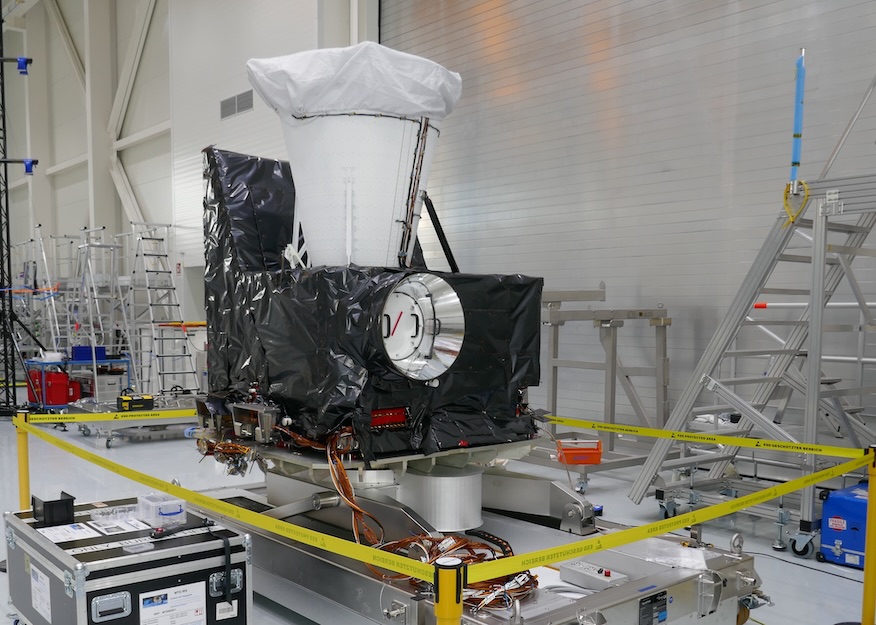
“The thermoelastic deformation of the platform and even internal to the instrument as well is very important to be controlled. So there’s an awful lot of carbon fiber and very highly stable structural elements within this to make this happen as well,” Champion said.
“In order to keep pointing the right way, there’s mechanisms onboard and, of course, these things have vibration, micro-vibrations. So we did actually develop as special rubber that we’ve used in various places over the spacecraft to damp and isolate these micro-vibration emissions that could be detrimental to the sources, like the detectors or even some of the lenses or mirrors.”
The goal of this new sounder, in concert with the imagers, both from this third generation and previous ones, is designed to offer key data to help better respond to severe weather events.
“The amount of severe weather events that the sounder data, in combination with our imaging data, will help is going to be immense,” Champion said. “More and more severe weather events are coming and the more warning, the more advanced warning we can give them, and with more accuracy as well, then the decision makers obviously are in a much better place to help in these kinds of situations.”
Along for the ride
Also flying onboard the MTG-S1 satellite is the Copernicus Sentinel-4 instrument. This is an ultraviolet, visible, near-infrared light (UVN) spectrometer that will capture hourly data on pollution and air quality.
It measures light both reflected from the Earth and its atmosphere as well as light directly from the Sun to determine the signatures left by trace gases, like formaldehyde, nitrogen dioxide, ozone and others.
“It’s a scientific marvel – measuring trace gases at parts per billion levels, from 36 000 km away. The orbit is 50 times further from Earth than low-Earth orbit missions, which makes the engineering challenge immense,” Giorgio Bagnasco, ESA’s Sentinel-4 project manager, said in a statement. “That’s like spotting a needle in a haystack – from space. But we will be able to detect pollution patterns in near real-time, supporting decision-makers and protecting public health.”
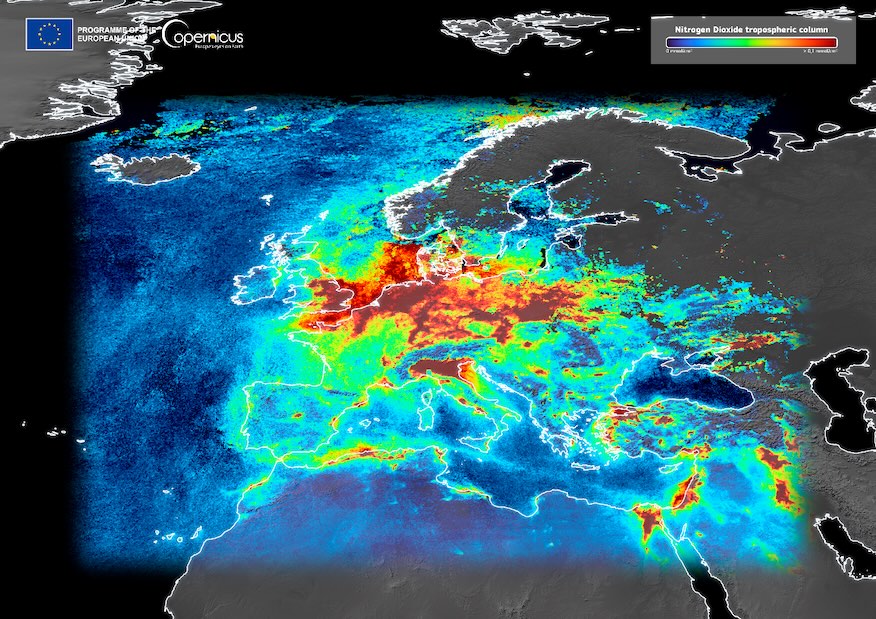
The Sentinel-4 instrument comes from the European Commission and marks the first time it is sharing a satellite with EUMETSAT.
“EUMETSAT will still be doing all the operational aspects around that and working with the European Commission to give that data and have it disseminated. So it’s a new partnership. We’re very much looking forward to it,” Champion said. “It’s the same setup as will happen on our next generation of low Earth orbit satellites. So the MetOp Second Generation A1 will be launched in the middle of August from Kourou and that has Sentinel-5 embarked on it in exactly the same setup as MTG-S1 has Sentinel-4 embarked on it at the moment.”
That satellite combination will launch on an Ariane 6 rocket.

